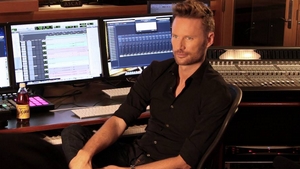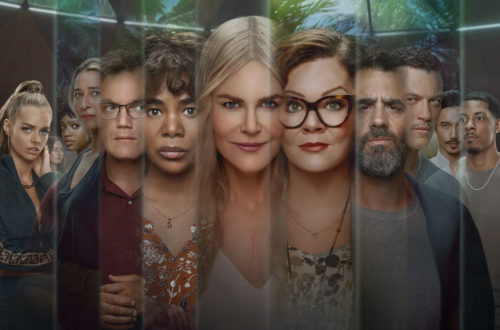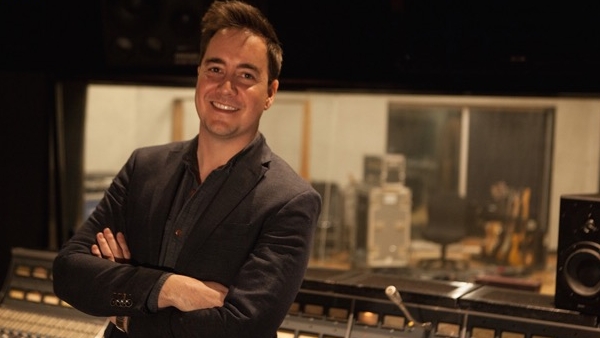
Award-winning composer Miles Hankins boasts a diverse body of work spanning the entertainment industry. He most recently co-composed Seth Rogen and Charlize Theron’s romantic comedy, Long Shot with Marco Beltrami. Additionally, Miles received a Sports Emmy nomination for Outstanding Music Direction on the HBO documentary series Being Serena and was recently honored at the awards ceremony in New York.
As an exceptionally creative independent composer, Miles has collaborated with Beltrami on several critically-acclaimed scores including A Quiet Place, which received a Golden Globe nomination for Best Original Score, Marvel’s Fantastic Four, Sony’s The Shallows, and Columbia Pictures’ The Night Before.
In addition to film, Miles scored CBS’s primetime series, 3 (executive produced by Chris Columbus), and created the fantasy adventure score for Netflix’s animated series, Lego Elves: Secrets of Elvendale and Lego Elves which premiered on Disney Channel. He has contributed his musical talents to more than 200 television series across NBC, FOX, CBS, ABC, USA, and SYFY for shows such as Family Guy, Burn Notice, Flash Gordon, and The Apprentice.
The film score business is ever-demanding and requires long hours, but Miles was able to spare some time to sit with us to discuss Long Shot and his profession.
GoSeeTalk: You and composer Marco Beltrami have collaborated quite a bit over the last few years. How is your year going and what’s the work dynamic between you two?
Miles Hankins: Marco and I have separate studios and separate careers, but I’m truly honored to work with him. Aside from being a great guy, he’s one of the most original voices in film music. I have my own projects as well; I just finished a documentary for HBO, and am talking to them about a project coming out later this year. I was recently nominated for a Sports Emmy for a series I did last year on HBO called “Being Serena.” I also did a LEGO series for Netflix two years ago, so it’s been a pretty diverse mix of projects.
When there’s some time in between, I like to jump on board and see what Marco is up to. At this point, we have a pretty good short hand and collaborative give and take, so it’s always a cool experience to work with him.
That reminds me of how Steve Jablonsky works with Nathan Whitehead to split the work load but also help Nathan’s career grow. How did you share the responsibility for scoring Long Shot?
We had worked with the director, Jonathan Levine, a few years ago on The Night Before. That starred Seth Rogen as well, so it was like getting the band back together. When Jonathan called about Long Shot, it made sense to bring us back under the same configuration. The way it works with Marco is that he’s very much involved in the writing and the creative oversight. In the case of Long Shot, I was fortunate to work on some themes, get them in front of Jonathan, and then run with it. Marco was there every step of the way to make sure it sounded like it should, and help Jonathan tell the story the way he wanted it told.
Jonathan is a very collaborative storyteller as well. He cares deeply about the music, and doesn’t’ let anything slide. He’s focused on making sure we walked the line between the comedy and the sincerity of the personal story. That’s always a challenge to not get in the way of the story with our music.
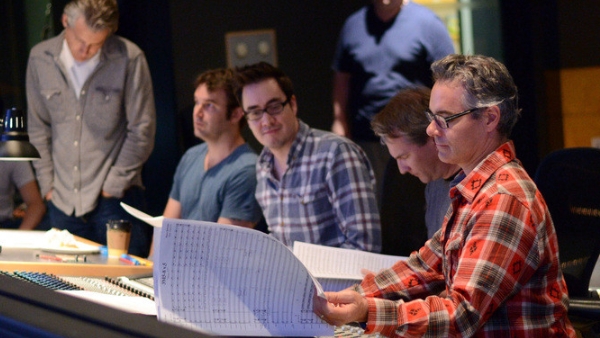
Are there rules to scoring a comedy? Are there certain things you’ve found along the way that don’t work in other genres but absolutely do in comedy?
A comedy is particularly challenging because the one thing music can’t be is funny. [Laughs] You want to make sure we’re not turning it into pizzicato stings and clarinet lines if it doesn’t call for it. You don’t want to turn it into an episode of Tom and Jerry. In the case of Jonathan’s movies, there’s a lot songs and pop music, so the score has to have its own sonic identity so when we hear it we know we’re going to a different place.
We decided there were three elements of music we aimed for. There’s the sincere love story which we wanted to play sweetly and honestly. Then there’s the guitars and upright bass and percussion played like an indie folk band. Lastly, there are themes which take us into a bunch of different settings – we have a sweeping Americana orchestral sound that we recorded with a 60-piece orchestra, and we have these big action set pieces where the music goes full tilt played like a straight up blockbuster movie just to have some fun with it.
We let the music do what it need to do, and didn’t want to force the music palette down one road using guitars for everything – the action cues would have been pretty boring. [Laughs] We let it go as big and broad as it wanted to go but we never tried to make it funny. The Night Before was a different animal. That was a combination of crazy comedy but also a film with a traditional holiday spirit. So there was a bit of a Home Alone feel to it with a Tchaikovsky influence so we could go a little more tongue-in-check with it.
Talking about a 60-piece orchestra, that may seem lost on audiences who imagine a comedy requires something very simple. Help us separate myth from reality: What’s the biggest misconception about your job and industry?
I feel like I’ve been so immersed in the profession I don’t know what the myths are, but I can tell you it’s much more time consuming than people think. It’s a pretty wild but rewarding job and it is fun to be able to come in to my studio every morning and write for film. But it’s a very laborious process because we have to mock everything up.
In the old days, a composer could sit down to their piano, crank out two minutes of music, and then hit the golf course by 4:00 in the afternoon. But those days are over for everybody. These days, we write the music, arrange it as well as program it, perform it, mix it, master it, and ship it all in the same amount of time. We do ten or eleven more jobs than a composer traditionally did. Its’s a lot of hours and we have teams to help with everything.
In terms of the creative puzzle, it’s always a bit of a conundrum as to what a particular movie should sound like. No matter how many movies I do, or the many TV shows I’ve worked on, it’s always this crippling and stifling frontier to be on when you’re looking out over it with the very burning initial question of “what should this sound like?” I don’t want this to sound like my last movie, I don’t want this to sound generic or like everything else, and sometimes it takes watching something several times to crack that code.
How much of the way forward is based on looking backwards? What composers or techniques of the past have helped with your process?
Elmer Bernstein had a great story about how he worked – he would sit in front of the movie for two weeks and screen it on a loop until it hit him with what he needed to write. Then he would walk out the screening room with it all laid out, Mozart style, like he was doing dictation. There’s myth to that [Laughs] but there’s truth in that you really need to watch something over and over before you start to see the heart and soul of it, before it starts to speak to you.
Sometimes that comes more quickly, but if it doesn’t, you have to keep watching and spending time with the material. Once you do that, you start hearing tones and sounds and melodies in your head. Until that happens, it’s a terrifying, daunting time when you’re trying a million things in a discovery period. With Long Shot, it came pretty quickly, and Jonathan was happy with our thematic development so we were able to hit the ground running.
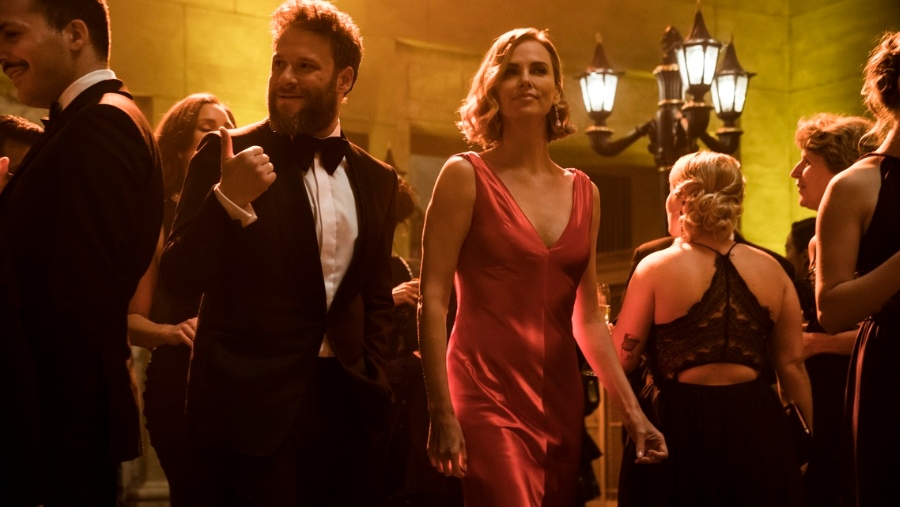
In an interview I had with Henry Jackman, he used the expression “beard stroking,” meaning there’s a lot of time to evaluate what you’re doing and experiment. But it sounds like very few people get that luxury of time. What accounts for that?
Having no time is a function of digital technology because editors and filmmakers can continue changing the picture. In the old days, when they cut films on a Steenbeck or a Moviola, they would eventually have to commit to a picture cut. At that point, the composer would come in, and write the score. Now they are changing the picture 17 times a day, and they are turning over new picture reels daily. Every time that happens, we take those new picture reels and retrofit our existing music to the new session.
There can be up to 60 sessions per film. 60 cues, 60 starts, etc. The process can become overwhelming for a music editor, so we try to tackle it on the compositional side.
It becomes an exercise in revisions and we do all of that in the time that a composer used to write the score once, or maybe twice if there are a couple revisions. Nowadays, we write film scores a dozen times before we record them because of all the revisions, but also because of the opinions coming down from studio and financing companies and studio executives. It’s a very different beast from what it used to be.
How were things in the old days?
There used to a very sacred, intimate relationship between the director and the composer. Also, the director didn’t get to hear the film score until it was assembled on the scoring stage. George Lucas still tells stories about that – he’s a comparatively young filmmaker compared to the old directors – but he would say that the best part of the filmmaking process, to him, was arriving on the scoring stage to hear the score for the first time. It’s different now than it used to be – we mock everything up, revise it a million times and get to the finish line.
The time constraints are also more impacting because we have less time to score. It’s not always the case, but you’ll hear these horror stories about a two hour film and a composer is asked to score or re-score it in two weeks. Even with all the advantages of technology, and the amazing facility it affords us, it creates new problems to deal with so it becomes a bit of a catch-22. Since that’s the way it is now, it’s a set of skills that a composer needs to have or learn to come to grips with to stay afloat.
What is asked of composers these days and what is happening in modern film music?
There’s a weird thing happening where there’s a score by committee. It can really restrict the creative canvas in which you’re allowed to paint. While it’s not always the case, we always look for collaborators and filmmakers to be respectful of our musical expertise. We like and want to work with people who allow for the creative space it deserves in order to achieve the best result. Long Shot was a dream because Jonathan is so generous with the creative space he gives you and he’s so supportive through the process. It was like a magical joy ride.
When you’re in a creative mode, what’s the one thing that invigorates you and keeps you going?
When I’m in that zone – sometimes it takes forever to get there – and I’m cranking, it’s great but I don’t think about food or drinks or anything. I’m just happy being in the zone. But if I work a particularly long night, I listen back on what I’ve done and enjoy a nice single malt scotch before turning into bed.
I think that one thing which young or aspiring film composers don’t understand is how important it is to find a work-life balance. I’m very fortunate in that I have a lovely wife and a 3 year old daughter and they give me a lot of energy, especially when I’m feeling really tapped out. They give me that extra boost. It’s really easy to get sucked into the single-mindedness working 15 hour days seven days a week. But you need to pull back from that when you can and keep things in perspective.
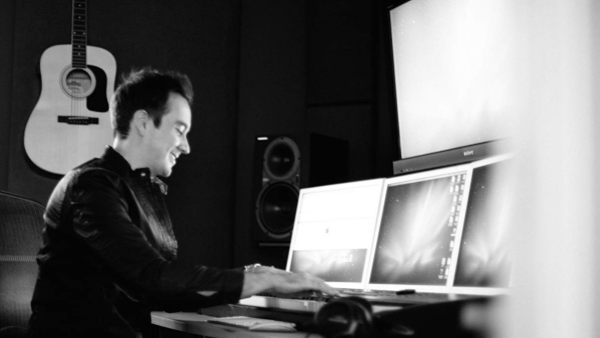
Thanks to Miles for his time. Directed by Jonathan Levine and starring Seth Rogen and Charlize Theron, Long Shot was released on May 3.
For more information about Miles, and to hear samples of his work, click over to his official site: http://mileshankins.com/

